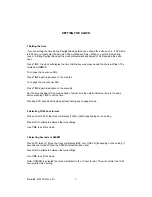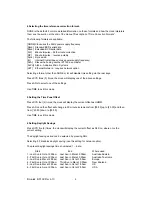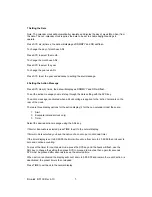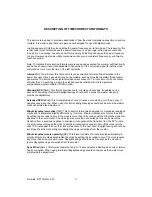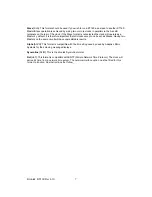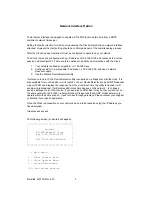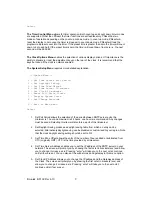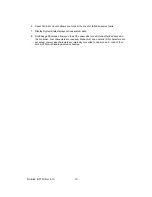
Krontek KT160 Rev 4.10
6
DESCRIPTION OF TIME CORRECTION FORMATS
This section is included to provide a description of how the clock interprets various time correction
formats. It is worth noting that some were never designed for use with digital clocks.
In all cases except [Int] the clock utilizes the power frequency as its time base. The reason for this
is that under most circumstances the power frequency is, on average, extremely accurate. We
include the on average caveat as short-term power grid loading can cause the power frequency
to vary. However most power utility companies will ensure a consistent frequency over a twenty-
four hour period.
Note: To indicate that correction formats were received and executed the colon(s) will flash briefly
each at each new minute (not applicable to Sync wired). If the correction signal is lost the clock
will continue to run from the time of the last correction.
Internal [Int]: We will cover this first as this is not a correction format but an alternative to the
power frequency time base which may not be reliable, such as sites that operate off local power
generators. The internal clock crystal provides an accuracy of ± 1 minute a month. For accuracy
of better than ± 5 seconds a month the clock should be ordered with the temperature
compensated crystal oscillator (TCXO) option.
Standard BCD [Sbcd]: This format provides hours, minutes and seconds. It updates once a
second. When using this format daylight savings should not be set as the master clock will
provide the adjustment.
Extended BCD [Ebcd]: This format provides hours, minutes, seconds, day, month and year. It
updates once a second. When using this format daylight savings should not be set as the master
clock will provide the adjustment.
Minute Impulse (corrective) [Sr2]: This correction format was designed for mechanical analogue
clocks and is interpreted slightly differently by this clock. Minute impulses synchronize the clock
by setting the seconds to zero (if the clock is more than 10 seconds past the minute the clock will
advance to the next minute). The clock ignores more than one pulse per minute, however the
transition from a previous negative to positive minute pulse at the transition from the 59
th
minute
to zero minutes will cause the clock to set the minutes and seconds to zero (if the clock is more
than 10 minutes past the hour the clock will advance to the next hour). Daylight savings should be
set (if used) as the clock will ignore daylight savings corrections from the master.
Minute Impulse (reverse polarity) [RP]: This format consists of minute impulses alternating in
polarity. Minute impulses synchronize the clock by setting the seconds to zero. The clock ignores
any more than one pulse per minute. Daylight savings should be set (if used) as the clock will
ignore daylight savings corrections from the master.
Sync Wired [Sync]: This format consists of an 8 or 12 second pulse indicating an hourly or twelve
hourly correction. When using this format daylight savings should not be set as the master clock
will provide the adjustment.



